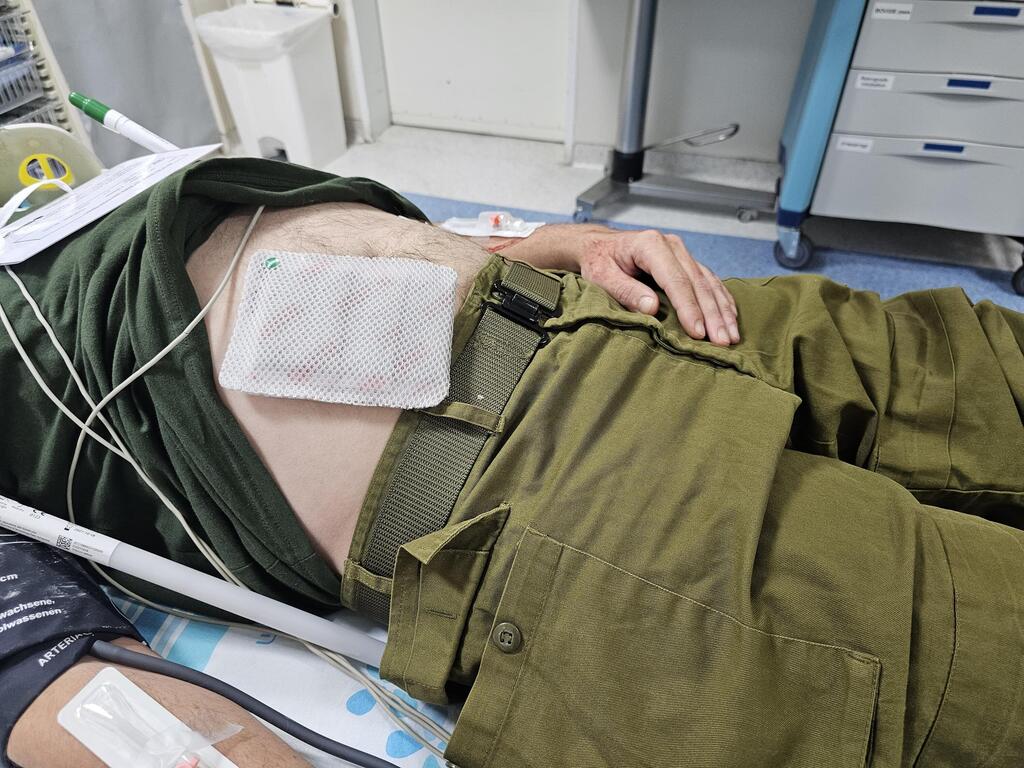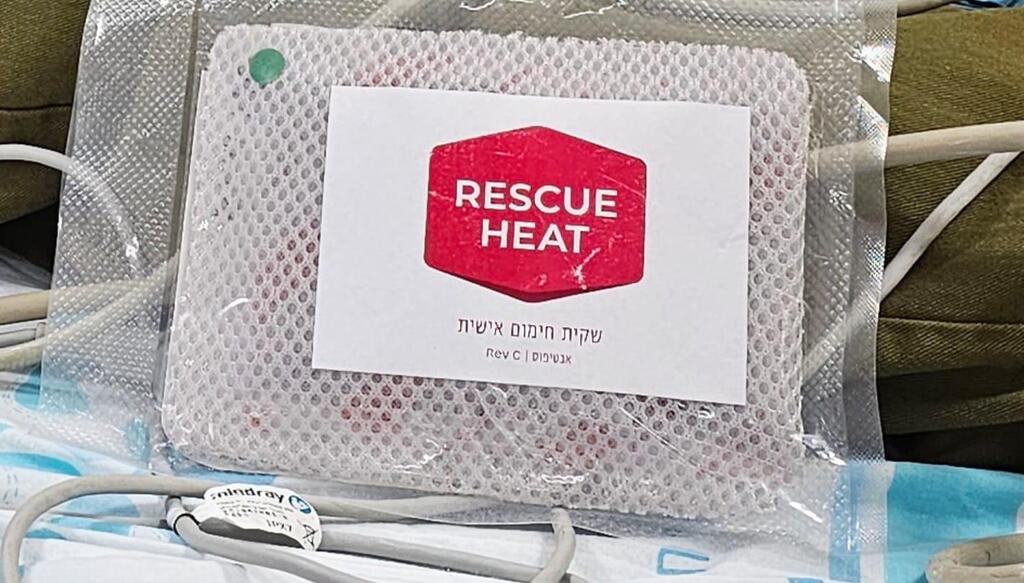In the realm of injury and blood loss, hypothermia poses a significant risk due to the rapid decrease in body temperature. Addressing this challenge, an innovative Israeli development has emerged, aiming to rewarm the body, prevent further deterioration of the injured, and ultimately save lives.
Read more:
This groundbreaking initiative stems from the Rescue Heat start-up, led by Hagai Weisbrod, CEO of Noyad Biomed and Paratrooper Reserve Brigade, and Dr. Amit Lehavi, director of the pediatric anesthesia unit at Health Care Campus Rambam, a military doctor, and the company's medical advisor.
The technology has successfully passed feasibility tests in the laboratory and on healthy human skin. The need for such a solution, for efficient, rapid, and safe heat transfer, was demonstrated in a comprehensive study led by Dr. Lehavi, comparing leading methods for maintaining body temperature. The study revealed the effectiveness of the patch developed by Rescue Heat, with a reduced risk of burns. Initial patches were delivered for testing in IDF units currently fighting in Gaza.
"In trauma situations, such as combat injuries, the body may go into shock and lose heat for various reasons, such as blood loss, the inability to maintain body heat due to peripheral blood vessel constriction, and sometimes simply lying on the cold ground," explains Dr. Lehavi, who has participated in numerous rescue and relief missions.
"Once the body temperature drops below 95 degrees Fahrenheit, the body enters a state of hypothermia, and various body systems stop functioning as they should. In the context of injuries and bleeding, the main danger in these situations is that hypothermia affects blood clotting, leading to uncontrolled bleeding and an increased risk to life."
Dr. Lehavi adds that various studies have compared the success rates of surgeries in U.S. hospitals that warmed the bodies of the patients they received and those that did not, showing significant improvement in all measures of patients who received the warming, including faster recovery and earlier discharge from the hospital.
Objective: Keep patient at 98.6 degrees
Adi Shalev, VP of Operations at Noyad Biomed and manager of the Rescue Heat project, explains the groundbreaking approach to combat the challenge and prevent hypothermia even before reaching the hospital. He delves into the core of the product, highlighting the development of an innovative heating patch designed for efficient and safe body warming, emphasizing its simplicity and speed of use.
The heating material, a unique patented development, springs into action when shaken and exposed to air. Shalev elaborates on the sticker's composition, describing a smart material that adheres to the body and is engineered to heat up to a temperature of 107.6 degrees, carefully regulated to prevent burns. "This temperature serves as the safety limit for skin attachment, revolutionizing the process of directly applying the sticker to the injured body and significantly enhancing heat transfer compared to existing alternatives. We aim to maintain the injured person's body temperature within the normal range of 98.6 degrees," Shalev emphasizes.
He explains, "the bag heats up to a temperature of 107.6 degrees within 15 minutes of its activation, and maintains the temperature for eight hours. The direct adhesion optimizes the transfer of heat tenfold compared to the products currently used in the field."
Dr. Lehavi further adds, "the sticker is intended to be used as an addition to the normal treatment protocol for the wounded and does not require adjustments or changes in the way the medics conduct themselves in the field."
Dr. Lehavi shares that "each year, 20 million trauma victims are admitted to hospitals in the U.S., and two-thirds of these patients are also diagnosed with hypothermia."
In his lab, an evaluation was conducted on the majority of existing heating products. A study comparing five different active heating technologies and five passive methods for preventing heat loss revealed that the thermal patch has a higher efficiency potential than the other methods tested. The team behind the development is optimistic about demonstrating that the temperature can be maintained for 480 minutes, a significant improvement over the 90 minutes or less achieved with other methods.
"We have already distributed units of the thermal sticker to the IDF for field testing by elite units. We are hopeful that this development can contribute to saving lives," Dr. Lehavi concludes.





